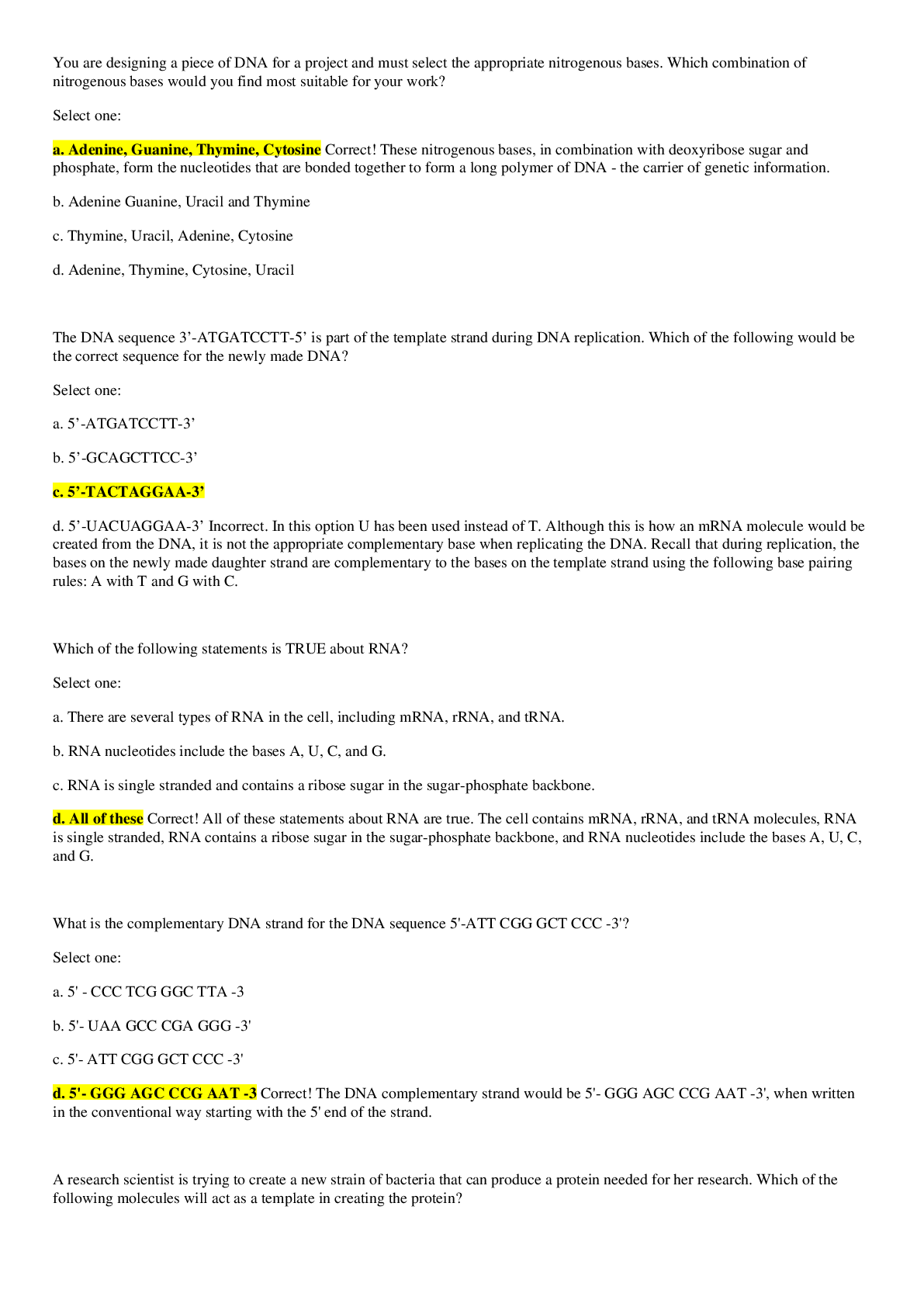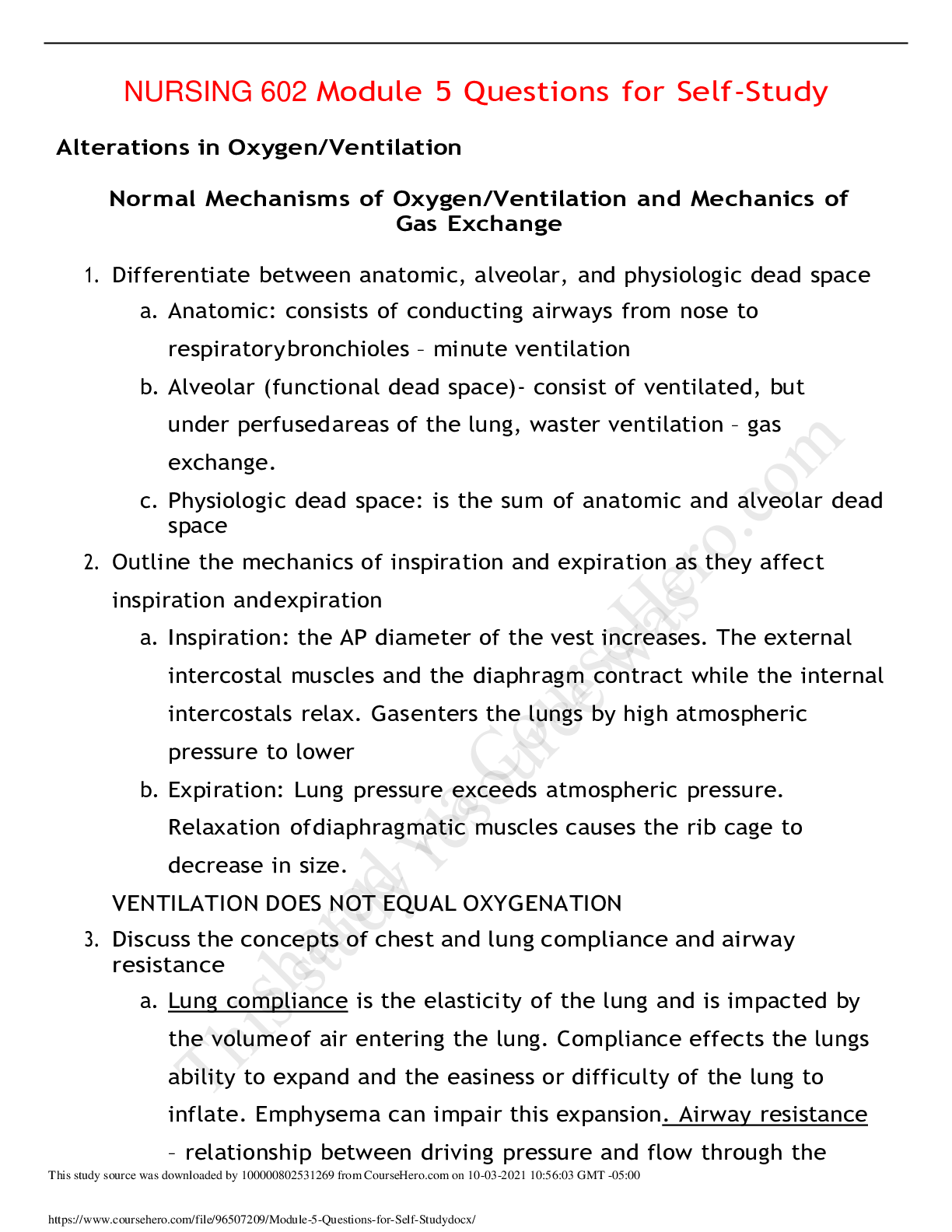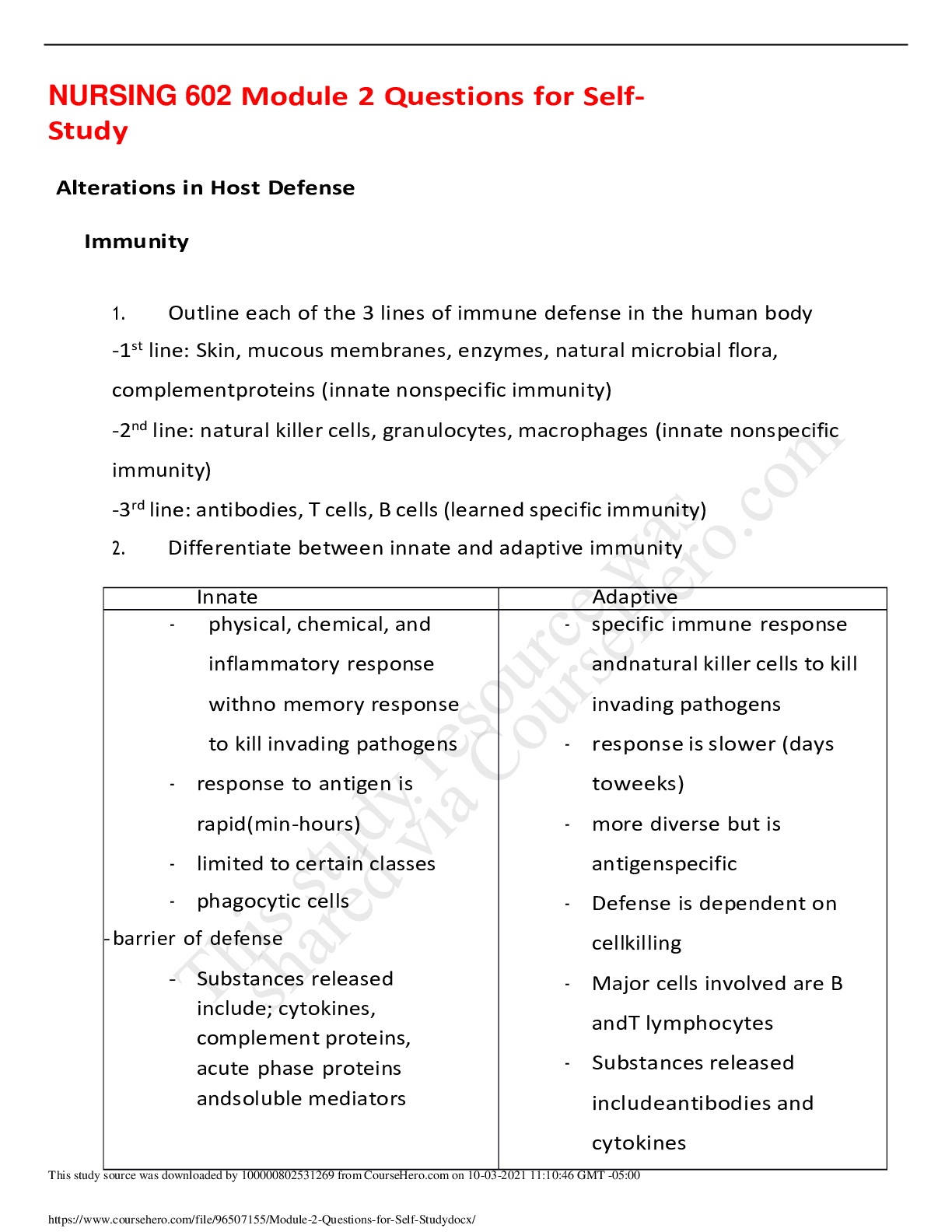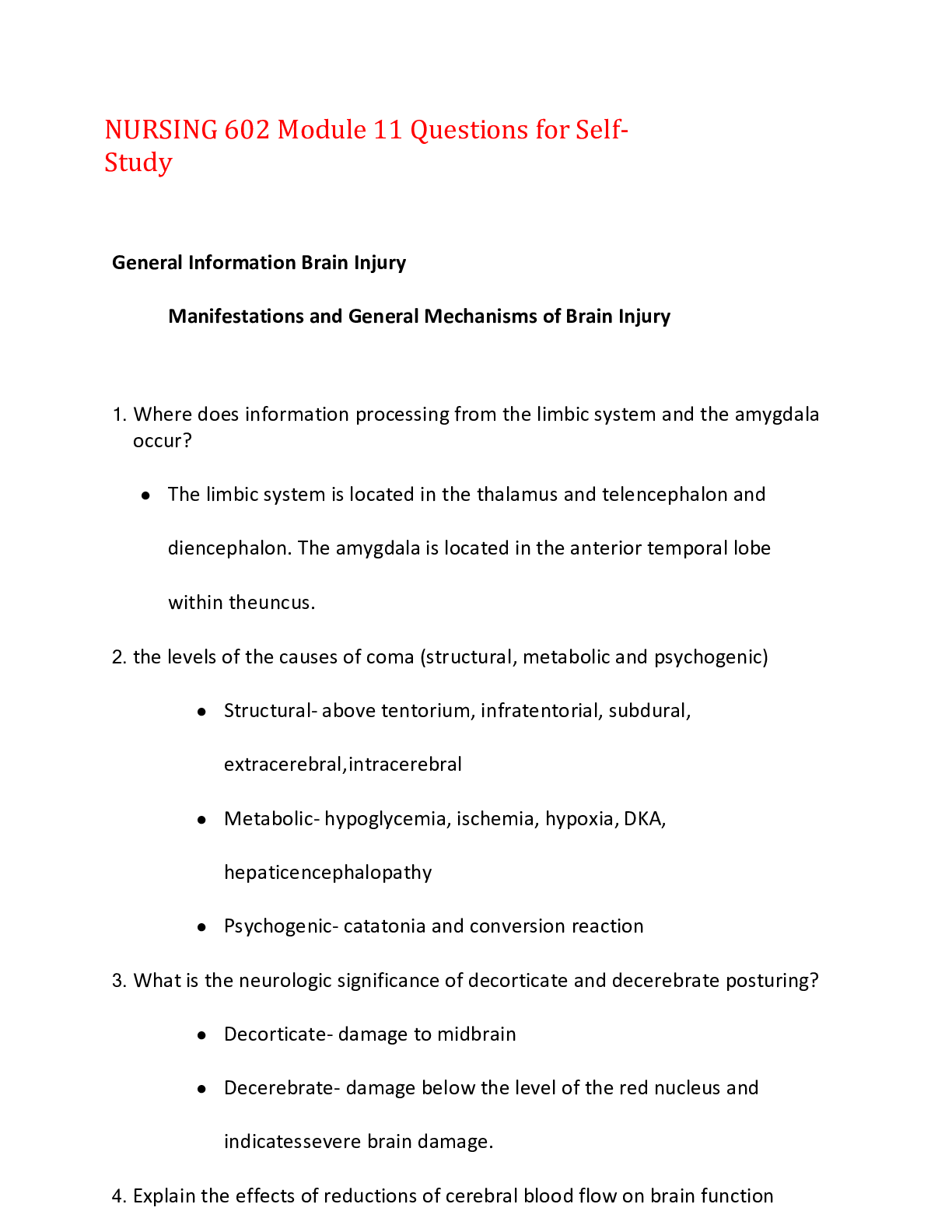NURSING 602 Module 1 Questions for Self-Study,100% CORRECT
Document Content and Description Below
NURSING 602 Module 1 Questions for Self-Study Adaptation and Alterations in Cell Function 1. Describe the processes cells use to communicate with each other - PARACRINE SIGNALING 2. What is th... e electron transport chain and why is it important for oxidative metabolism and the formation of ATP? -The electron protein chain created energy to phosphorylate ADP to produce ATP -Oxidative phosphorylation occurs in the mitochondria and is the source of energy generation in the production of ATP 3. How does cell damage impair oxidative phosphorylation? - Cell damage disrupts the production of energy to form ATP by perforating the barrier needed to achieve production. 4. What is most common cause of reversible cell injury? - Hydropic swelling is the most common cause of cell injury. This is due to the malfunction of the sodium-potassium pump from insufficient ATP production. 5. Differentiate between the 6 adaptive cellular growth patterns - Atrophy: due to decreased work from decreased protein synthesis and/or increased protein catabolism - Hypertrophy: increased cells in an organ or tissue - Hyperplasia: increase in number of cells due to a response to injury, stimulation of DNA synthesis, organ regeneration, hormones - Dysplasia: mutation on cell size - Metaplasia: one cell type replaced by a different cell type (chronic inflammation or irritation) - Neoplasia: abnormal cellular differentia or increased number of cells 6. Outline the mechanisms of cell injury - Cells can be damaged on a level of nutritional, infectious and immunological, or chemical. Nutritional injuries the RBS and brain cells due to lack of essential amino acids. Infectious injury to the cell is due to virulent viruses and bacteria. Metabolizing chemicals can cause chemical injury. 7. How does cellular apoptosis differ from cellular ischemic injury? -Apoptosis is programmed cell death or suicide which differs from cellular ischemic by cellular injury being due to cells being robbed of nutrients necessary for glycolysis. 8. How do excess free oxygen radicals damage the cell? -Through a process called oxidation, free radicals steal their electrons and impair synthesis. 9. What substance act as free oxygen radical scavengers? -Preventative and chain breaking antioxidants. 10. Describe the sequence of events that occurs in the cell when oxygen is cut off or unavailable -Rapid accumulation of metabolic waste occurs then the cell is robbed of nutrients needed for ATP generation and can ultimately result in reperfusion injury. Genetic Abnormalities 1. Define the following: genotype, phenotype, codon, allele, and single nucleotide polymorphism (SNP) -Genotype: The genetic code of an organism -Phenotype: Organisms characteristics -Codon: a sequence of three nucleotides which form a unit -Allele: pairs of genes on a chromosome that determines the heredity characteristics -Single Nucleotide Polymorphism: A single variation in a single base pair in a DNA sequence 2. What is the function of DNA, RNA, messenger RNA, ribosomal RNA, transfer RNA? -DNA: contains sequencing the transcribes genetic code - RNA: functions as a nucleic acid messenger between DNA and ribosomes - mRNA: carries a DNA template sequence to cytoplasm to be copied -rRNA: is where the protein is assembled and translated into protein -tRNA: carries amino acids to the ribosome for assembly into proteins 3. Differentiate between autosomal dominant and autosomal recessive traits and disorders\ -autosomal dominant: An abnormal gene in just one parent will cause a disease or disorder even if the other parent does not have it -autosomal recessive: To have a disorder or disease from a mutated gene, both parents must have a the abnormal gene 4. Define the process of translocation, deletion, and inversion of chromosomes -translocation: material on one gene is located to another chromosome -deletion: a sequence of a gene is deleted -inversion: a sequence of a gene is flipped around 5. Differentiate between polyploidy, aneuploidy, and X inactivation -Polyploidy: Contains more than two homologous sets of a chromosome -aneuploidy: Abnormal amount of chromosomes - X inactivation: One of the two X chromosomes in a female is silenced early in development 6. Describe the principles of inheritance associated with an X-linked disease -The affected gene typically comes from the male, carrier mothers pass the disease to 50% of sons, father transmits the disease to all females. 7. Describe the characteristics of in individual with the sex chromosome pattern of XYY -Jacobs Syndrome; male appearance, very tall, mild retardation, behavioral disorders 8. Define the term DNA mutations and describe the types of DNA mutations -A mutation is a change in the nucleotide, this can either be from a deletion, insertion, inversion, duplication or translocation. 9. Describe the gene mutation concepts of pleiotropism, penetrance, variable expression, and heterogeneity - pleiotropism: a single gene influences two or more distinct phenotypic traits - penetrance: a genotype that expresses its phenotypic gene is a given environment - variable expression: degree in which an individual expresses their genotype phenotypically - heterogeneity: a single phenotype or genetic disorder may be from multiple alleles or non-allele mutations 10. Describe mitochondrial inheritance? -Caused by mutations in mitochondrial DNA and are transmitted by maternal inheritance [Show More]
Last updated: 1 year ago
Preview 1 out of 7 pages

Buy this document to get the full access instantly
Instant Download Access after purchase
Add to cartInstant download
We Accept:

Reviews( 0 )
$12.00
Document information
Connected school, study & course
About the document
Uploaded On
Oct 03, 2021
Number of pages
7
Written in
Additional information
This document has been written for:
Uploaded
Oct 03, 2021
Downloads
0
Views
30














 (1).png)









